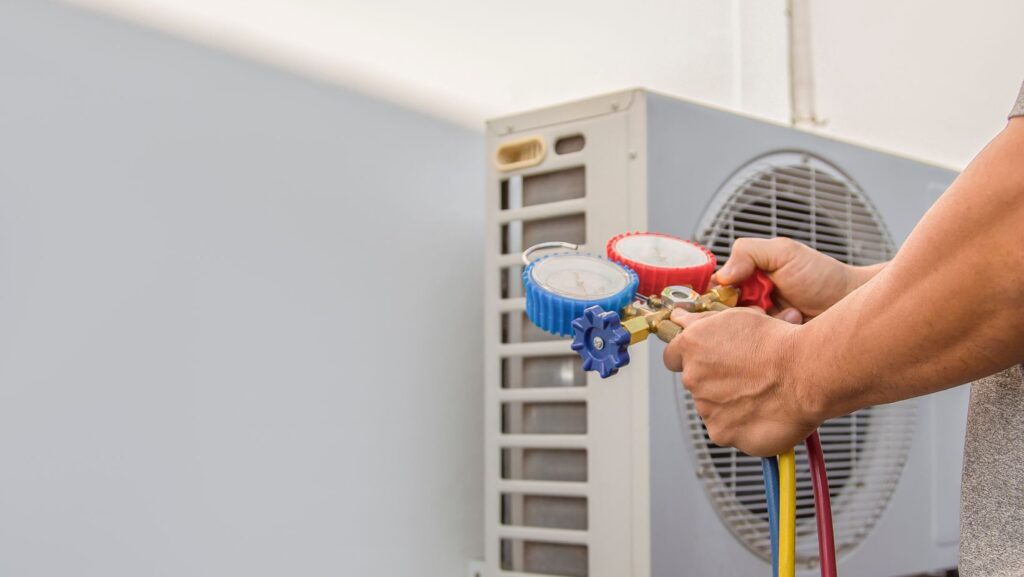Understanding the repair process can clarify and ease your concerns when your air conditioning system malfunctions. The process involves multiple steps, each crucial for restoring your AC to proper working condition. We will explore the various stages of AC repair, from initial diagnosis to final testing, ensuring you know what to expect during the repair.
Initial Assessment and Diagnosis
The first step in the ac repair Georgetown TX is the initial assessment and diagnosis. A technician will start by inspecting your air conditioning unit to identify the source of the problem. This phase involves checking for common issues such as refrigerant leaks, electrical faults, or mechanical failures. The technician will also evaluate the unit’s overall performance, including airflow, cooling efficiency, and temperature control. They can pinpoint the exact cause of the malfunction using diagnostic tools and their knowledge. This detailed examination helps determine the appropriate repair or replacement parts to address the issue effectively.
Repair and Replacement of Faulty Components
Once the problem is diagnosed, the next step involves repairing or replacing faulty components. Depending on the nature of the issue, this may include changing out broken parts like the compressor, evaporator coil, or condenser. The AC repair service will use high-quality replacement parts compatible with your AC model to ensure a reliable repair. This step is crucial as using the right components ensures the longevity and efficiency of your unit. Additionally, any necessary adjustments to the system’s settings or calibration will be made during this phase to optimize performance. Proper installation of new parts is essential to avoid future issues and maintain the system’s overall functionality.
System Recharging and Testing
After replacing the faulty components, the AC system must be recharged with refrigerant. This step is necessary if there is a refrigerant leak or the system is low on refrigerant.

The technician will carefully measure and add the correct amount of refrigerant to ensure optimal cooling performance. Once the system is recharged, it undergoes thorough testing to confirm the repair’s success. This includes checking the airflow, temperature regulation, and overall efficiency. The technician will also monitor the system for recurring problems or leaks. Proper testing ensures the unit operates smoothly and effectively before the technician completes the repair process.
Final Checks and Customer Briefing
The final step in the AC repair process involves conducting a series of final checks and briefing the customer. The technician will perform a comprehensive inspection to ensure all repairs are completed correctly and the system functions as expected. This includes verifying that all components are securely installed and that there are no remaining issues. The technician will also provide the customer with a detailed explanation of the repairs performed, maintenance tips, and how to prevent future problems. This briefing helps the customer understand the work done and how to care for their AC unit to extend its lifespan and improve performance.
Troubleshooting and Preventive Maintenance
Before delving into repairs, technicians often troubleshoot to identify underlying issues that may take time to be apparent. This step involves checking the system’s control board, inspecting the thermostat settings, and evaluating the overall condition of the ductwork. Troubleshooting helps to uncover potential problems that could lead to future breakdowns. Preventive maintenance, which may include cleaning or lubricating components, is also part of this stage. Regular preventive care helps maintain the system’s efficiency and extend its lifespan. By addressing minor issues before they escalate, you can avoid costly repairs and ensure your air conditioning system remains in optimal condition.
Handling Complex Repairs and Upgrades
Some AC repair situations may involve complex issues that require advanced knowledge and skills. For instance, repairing a faulty compressor or addressing issues with the system’s electrical components can be intricate tasks that demand a thorough understanding of HVAC systems. Additionally, technicians might recommend upgrades, such as installing a more efficient thermostat or adding air purifiers, to enhance the overall performance of your AC unit.

Handling these complex repairs and upgrades ensures that your system works efficiently and incorporates the latest technology for improved comfort and energy savings. Professional handling of these tasks is essential to ensure that all components function harmoniously and the system meets current standards.
Post-Repair Follow-Up and Support
After completing the repair, a reputable technician will offer post-repair follow-up and support. This phase includes checking in with the customer to ensure the AC unit operates correctly and addressing additional questions or concerns. Post-repair support also involves scheduling a follow-up visit to monitor the system’s performance over time. Offering guidance on regular maintenance practices and how to spot early signs of potential issues is also part of this support. Ensuring customer satisfaction and providing continued assistance helps build trust and ensures that any remaining concerns are promptly addressed. This ongoing support is crucial for maintaining the system’s reliability and ensuring long-term comfort in your home.
Understanding the AC repair process in detail—from troubleshooting and preventive maintenance to handling complex repairs and providing post-repair support—can significantly enhance your experience when your air conditioning system requires attention. Each step is designed to address immediate issues, prevent future problems, and ensure the overall efficiency of your unit. Knowing what to expect lets you make informed decisions and maintain a comfortable and well-functioning air conditioning system in your home.


More Stories
Practical and Creative Uses for Plastic Sheets in Your Home Projects
Common Household Issues That Need an Emergency Electrician
The Benefits of Regular Plumbing Inspections for Homeowners